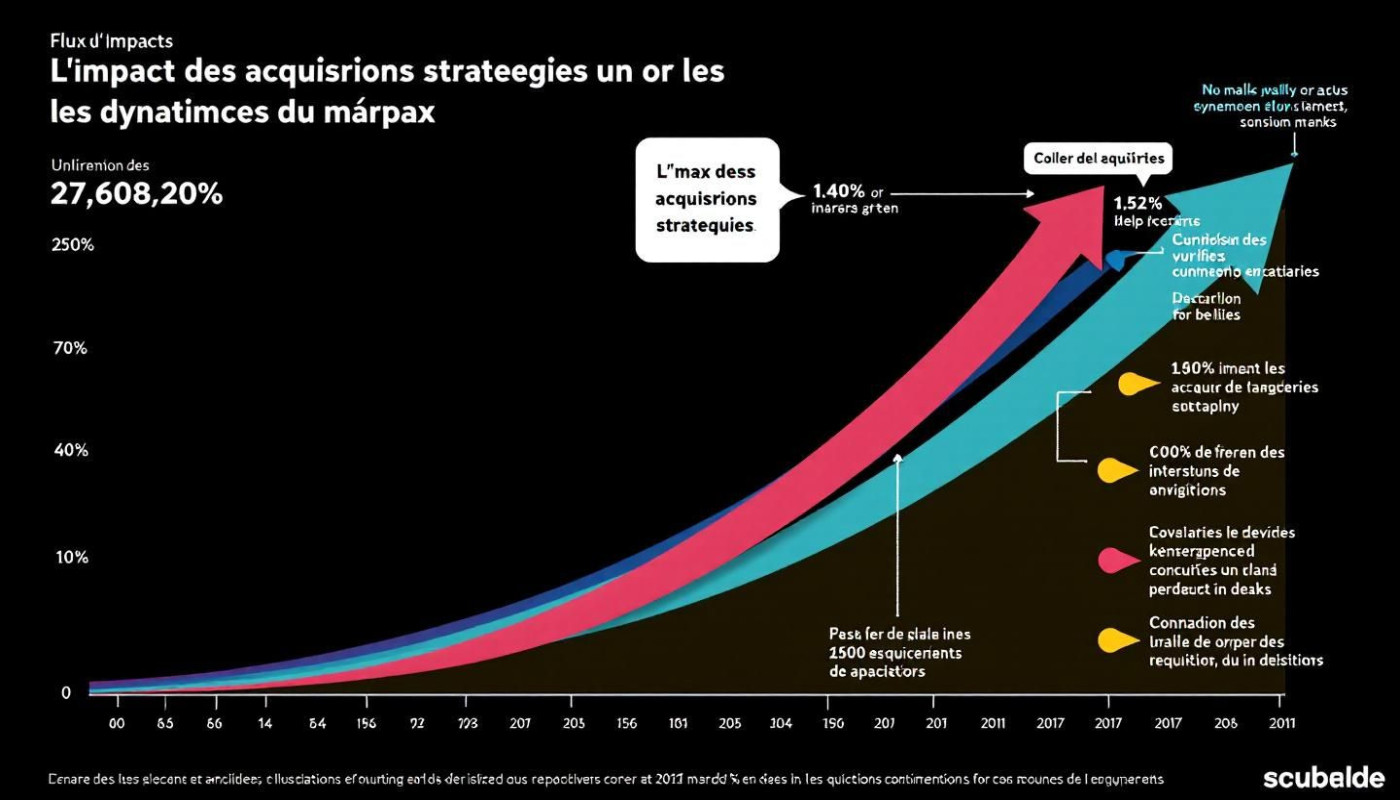Table of contents
In today's fast-evolving business landscape, strategic acquisitions have become a transformative force, reshaping entire industries and influencing competition worldwide. The interplay between such acquisitions and market dynamics sparks a fascinating dialogue about growth, innovation, and consumer choice. Delve deeper to uncover how these purposeful moves alter the competitive landscape, generate fresh opportunities, and sometimes introduce new challenges for businesses and stakeholders alike.
How acquisitions reshape competition
Strategic acquisitions play a decisive role in reshaping market competition by altering the balance of power within industries. When companies merge, an immediate effect is industry consolidation, which often leads to greater market concentration. This technical term, defined by the most authoritative market analysts, refers to the increased dominance of fewer players, which can shift pricing, supply chains, and customer choice. Such consolidation sometimes enhances strategic growth by enabling firms to leverage synergy—combining complementary assets, technologies, and expertise to outperform rivals. At the same time, this amalgamation can stimulate innovation, as newly unified entities pool resources to accelerate product development or expand into new segments, ultimately impacting market share distribution. The ripple effects on market competition are complex: while some sectors may see reduced rivalry, others experience heightened innovation and efficiency, making strategic acquisitions a pivotal force in modern business landscapes.
Economic ripple effects explained
According to leading economist Joseph Stiglitz, the economic impact of strategic acquisitions extends far beyond the companies directly involved. When one firm acquires another, the economic multiplier comes into play, amplifying the initial investment throughout the broader economy. Positive effects include potential job creation, especially when the combined entity invests in expansion or innovation. Enhanced supply chain efficiency often follows, as the newly formed company can negotiate better terms, streamline logistics, and boost productivity. On the downside, these mergers may also raise barriers to entry for new firms, as larger conglomerates control more market share and access to resources, which can limit competition and lead to higher prices for consumers. The job market may experience both gains and losses; while some roles are created, redundancies can result in layoffs. Strategic acquisitions also influence capital allocation, directing funds toward sectors deemed most profitable, but sometimes at the expense of smaller players or less profitable industries. Understanding this complex interplay is key to evaluating the full ramifications of mergers and acquisitions in today’s economy.
Regulatory scrutiny and compliance
Regulatory challenges are central to the process of strategic acquisitions, with oversight from authorities designed to maintain market fairness and prevent anti-competitive outcomes. Antitrust laws serve as a primary tool, setting a monopoly threshold that, when crossed, prompts regulators to intervene. Regulatory bodies rigorously examine merger approval requests, often assessing whether the combined entity could dominate the market and harm consumer interests. Compliance with these regulations is demanding, as companies must navigate complex legal frameworks, provide transparent disclosures, and address concerns about reduced competition. In certain cases, regulators may impose conditions or reject deals outright, reinforcing the commitment to a balanced and open marketplace. This scrutiny ensures that acquisitions do not erode competition or lead to unfair market advantages, safeguarding the interests of both consumers and smaller competitors.
Innovation and technology transfer
Strategic acquisitions often serve as potent catalysts for accelerated innovation and seamless technology transfer, unlocking new pathways in the innovation pipeline. When firms merge or acquire, they gain immediate access to cutting-edge technologies, proprietary systems, and a diverse pool of expertise. This process fosters knowledge sharing and the integration of intellectual property, enabling rapid product improvements and sometimes triggering industry disruption. The acquired talent pool brings fresh perspectives and technical know-how, which can be strategically leveraged to enhance R&D efforts and speed up the commercialization of new solutions. Furthermore, these integrations facilitate the adoption of advanced processes and technical infrastructure, amplifying the acquiring firm's competitive edge. As demonstrated by high-profile investment funds making technology-driven acquisitions, such as those managed by Max-Hervé George, the effective blending of resources often propels entire sectors forward. For more insights into industry-shifting acquisitions and their broader market implications, see the blog here.
Long-term value for stakeholders
Strategic acquisitions carry the potential to significantly enhance stakeholder value over the long term, impacting not just investors, but also employees and customers. When a company carefully evaluates targets and aligns acquisitions with its sustainable strategy, it can improve financial performance by driving revenue growth, expanding market share, and leveraging operational synergies. Enhanced shareholder equity remains a central measure for investors, who look for increased returns and reduced risk through strengthened competitive positioning. For employees, successful cultural integration is vital, as it ensures talent retention and fosters innovation within the new organizational framework. Customers, in turn, benefit from improved service offerings, broader product portfolios, and consistent quality, which fuels long-term growth for the business. The most authoritative investment strategists emphasize that integrating companies with complementary strengths and shared values is essential for sustaining such benefits, while also nurturing trust and stability across all stakeholder groups.





